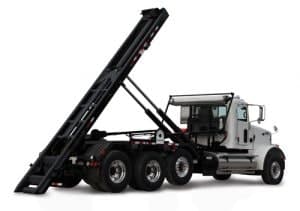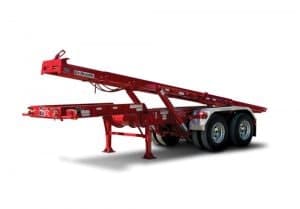Proper maintenance prevents downtime, boosts productivity and hinders potentially dangerous issues with hoist operation.
By Larry Keul
It is time to put aside the age-old saying “Don’t fix it if it’s not broken.” Preventative maintenance of hoists, just like any other heavy equipment, is critical for keeping equipment in safe, efficient working order. The cost of downtime is tremendous, but an injury is even more detrimental.
Hoists work hard. They are typically used daily, in all sorts of extreme environments, and like any heavy equipment, they have electrical systems, controls, switches and hydraulic systems—not to mention constant abrasion of metal against metal. Normal wear and tear can result in inefficient operation and shorter life span. But, by performing regular preventative maintenance, you can nip possible issues before they rear their heads—not only preventing downtime and boosting productivity, but avoiding unsafe conditions for both
the hoist and operator. Plus, preventative maintenance takes less time and money than emergency repairs and/or equipment replacements.
Maintenance begins with the purchase and use of a hoist that is designed for a specific application. Trained, qualified and competent personnel should always perform operation, inspections, service and maintenance. The age and type of equipment certainly plays a role in determining maintenance needs, but a good program infuses weekly, monthly and yearly maintenance tasks.
Keep Your Equipment in Working Order
The following are recommended preventative maintenance tasks that will keep your hoist in top working order and protect against premature failure and/or extensive wear and tear, significantly extending the life of your hoist.
Recommended Daily Inspections
- Backup and hoist-up warning systems
- Cable and cable ends
- Electrical wiring
- Front stops
- Rear hold-downs/container securement system
- Hydraulic and air leaks
- Hydraulic components
- Lamps
- Nuts and bolts
- Oil level
- Pivot points
- Rear hinge
- Reflectors
- Rollers
- Shafts and cotter keys
- Sheave blocks
- Structural components and welds
- Warning label legibility
General Maintenance
Lubricate your hoist at least once per week. Proper lubrication is essential for all types of bearings, gearing and friction-producing mechanical devices. Lack of adequate and proper lubrication results in premature wear and failure of components due to increased abrasion or excessive heat.
All grease fittings should be properly greased after 40 hours of service, and a minimum of once per week for average use.
Inspect hydraulic system daily for leaks, loose hydraulic lines and fittings, oil level and proper operation of hydraulic system.
- Replace air breather every six months.
- Replace oil filter every six months.
- Inspect and clean suction strainer when changing hydraulic oil.
- Inspect hydraulic oil for proper color, odor and feel every three months. Replace oil if it is milky or dark in color, begins to have an odor or lacks lubricity to your touch.
- Every 12 months, replace hydraulic oil with MV36 anti-wear hydraulic oil filtered through the return filter, or filter existing oil to ISO Code 18/15, and remove water with water separation media filter (water less than 50 parts per million).
- Inspect hydraulic cylinder rods, fittings and operation. Apply grease to the grease fitting on the hydraulic cylinder every week.
- Clean and replace all warning labels as necessary.
Mechanical Maintenance
Check structural and weld integrity to ensure proper and safe working condition of structural members. Make sure wear is within normal guidelines. Inspect weld joints.
Check front and rear stops to ensure proper, safe working condition.
Check nuts, bolts, shafts, cotter keys, etc. to ensure proper and safe working condition. Make sure wear is within normal guidelines and all items are within proper torque guidelines.
Check rollers, sheave blocks, rear hinge and pivot points to ensure proper lubrication, adjustment and operation.
Check container hold-down devices to ensure proper and safe working condition.
Inspect hoist cable daily and conduct a thorough inspection every 40 hours of usage for breakage, unraveling or flat spots. Inspect cable ends, clamps and pins. Lubricate cable frequently to prevent rusting.
Electrical Maintenance
Inspect all lamps and reflectors daily. Make sure they are clean and in proper working order.
Inspect all visible electrical wiring to ensure that it is not frayed, is properly supported and protected, and all connections are tight.
Use wire connectors with shrink tubing for watertight connections.
Verify proper and safe operation of backup and hoist-up warning systems.
Naturally, the suggested preventative maintenance inspection and time intervals above may need to be adjusted due to factors such as severe or heavy usage, muddy or dusty environments, special applications, and warranty and maintenance history issues.
Although this preventive maintenance plan is intended to be instructional, it is not exhaustive and provides a guideline only. The operator/owner must be alert to all possible hazards and use safe work habits, common sense and industry knowledge and experience when servicing and operating equipment.
Avoid Unexpected Downtime
Unexpected downtime is aggravating—not to mention costly; however, it can typically be avoided by simply performing regular maintenance tasks and taking care of early warning signs and/or performance issues. Waste haulers can realize all the benefits of a hoist ownership by choosing the correct model for the application, meeting all installation requirements, and scheduling regular maintenance. With proper use and maintenance, hoists should last for many years, reducing collection costs while safely hauling waste, recycling and scrap materials. And do not forget to think green! Always recycle hydraulic oil and dispose of oil properly. | WA
Larry Keul is a Product Manager for Wastequip’s (Charlotte, NC) Mobile Division, which includes Galbreath-branded hoists, trailers and container handlers. Wastequip is a leading North American manufacturer of waste and recycling equipment. Wastequip’s broad range of waste and recycling equipment and systems is used to collect, process and transport recyclables, solid waste, liquid waste and organics. The company’s brands include Wastequip, Toter, Galbreath, Pioneer, Accurate, Cusco, Mountain Tarp, and Go To Parts. For more information, call (877) 468-9278 or e-mail [email protected].
Regulatory Safety Standards
The following are tips for properly maintaining your hoist to meet all regulatory safety standards and operation requirements:
- Always provide hoist operators with instruction and training on safe methods of operation before assigning them to operate, clean, service, maintain or repair equipment. The hoist owner should maintain detailed records with names of operators who have been trained, and dates of said training.
- Consistently monitor equipment operation to ensure proper use and safe practices.
- Establish a program of periodic and regular inspections of all equipment to ensure that all parts, component equipment, and safeguards are in safe operating condition and adjusted in accordance with the manufacturer’s recommendations. This includes keeping all malfunction reports and records of inspections and maintenance work performed.
- Repair any/all mechanical malfunctions, breakdowns, or normal wear and tear that affects safe operation of equipment before allowing the equipment to be used (i.e., cracks, lights, hoses, latches, hitches, hold-downs, missing labels, etc.)
- Ensure appropriate lighting requirements are in place before attempting to operate the equipment during hours of darkness.
- Ensure equipment will not be used to lift, haul or move weight that exceeds the load rating capacity.
- Ensure hoist is adequately supported when it is raised for service or maintenance.
- Always use a lockout procedure when cleaning, servicing, maintaining or repairing hoist.
- Affix a sign or similar communication that states the minimum overhead clearance required for the vehicle and container for any equipment that carries detachable containers.
- Inspect safety equipment and protective devices to ensure that they are not disabled or bypassed in any way.
Most importantly, never permit operation of equipment that is not fully functional. Failure to comply could result in severe injury or death to operator and surrounding persons and/or damage to the truck, hoist or other equipment.


